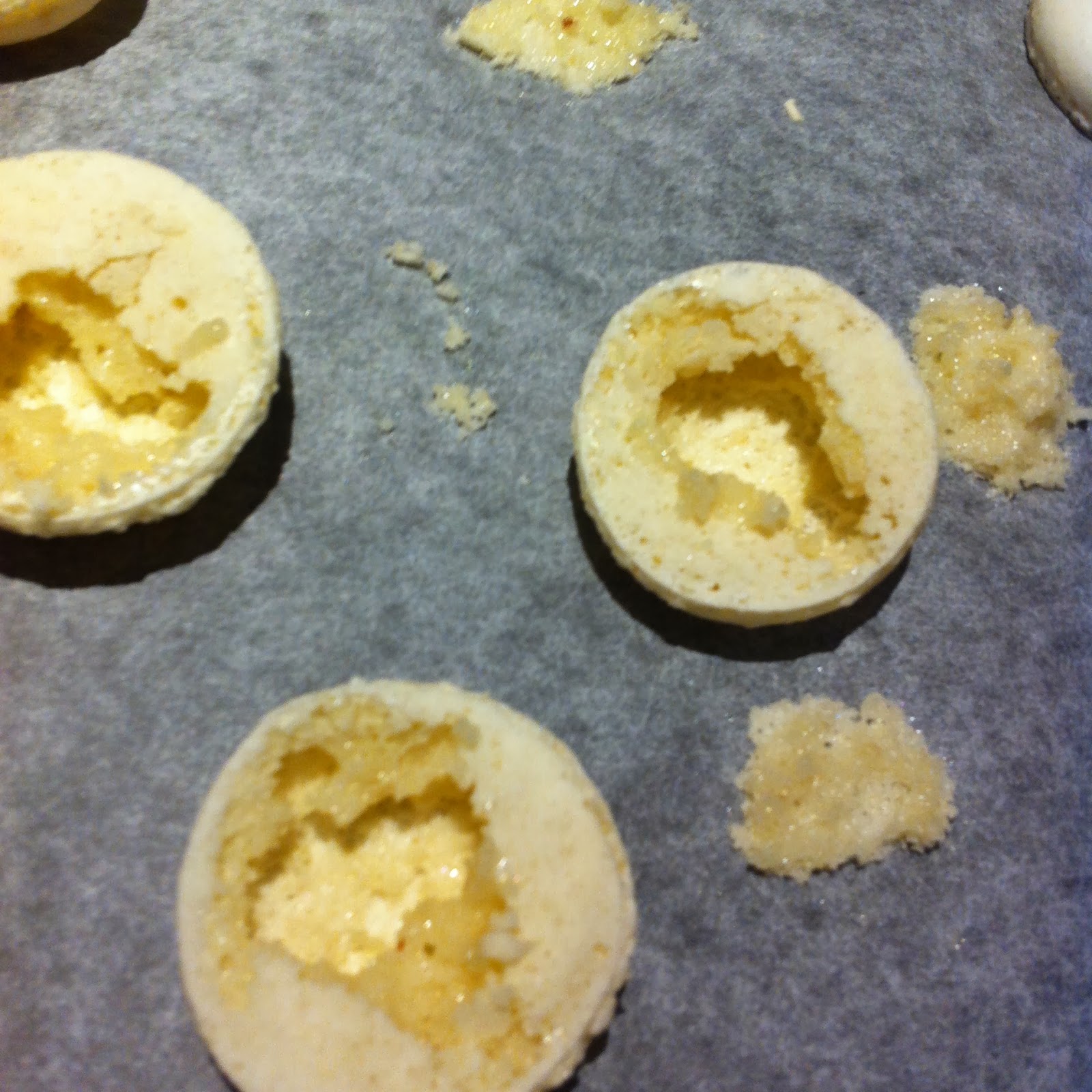Ingredients:
Italian meringue
200g caster sugar
75ml water
80g egg whites (3-4 eggs)
Paste
100g ground blanched almonds
100g ground blanched unsalted peanuts
200g icing sugar
80g egg whites (3-4 eggs)
Filling
125g double or whipping cream
175g dark chocolate chips
2 tablespoons peanut butter
Method:
Start by making the Italian meringue mixture. Heat the water and sugar to 114 degrees C as quickly as possible without stirring. While this boils, gently beat the egg whites to soft peak. As the syrup reaches 114 degrees C, increase the speed of the mixer and pour the syrup in a thin stream down the side of the bowl into the beaten egg whites. Continue beating for 5 to 10 minutes while the mixture cools
Working quickly, make the paste: mix the icing sugar and ground nuts together, then stir in the unbeaten egg whites. Using a spatula, fold in one third of the meringue mixture, then add in the rest, taking care not to overmix.
Line several baking trays with parchment (you can use a little of the mixture to stick the parchment to the tray). Put a number 1A plain round nozzle in a piping bag and pipe out small round mounds onto the parchment. Tap the bottom of the trays lightly on the counter and leave the macarons to rest at room temperature for about half an hour. They will form a thin crust so that when you lightly run a finger over them, no batter sticks to you.
 |
| Bit ashamed of my piping nipples |
Heat the oven to 150 degrees C and bake the macarons for 14 minutes. As soon you take the cooked macarons out of the oven, slide the parchment on to a cold counter top to "shock" them and ensure they come cleanly off the parchment.
Be prepared to have a few disasters - for me the macarons at the bottom of the oven often come out a hollow sticky mess.
With any luck most will have a nice smooth bottom
While these cool, make the filling by bringing the double cream to boiling point. Remove the pan from the heat, add the chocolate and allow to sit for a couple of minutes, then beat into a smooth glossy ganache. Then add the peanut butter. Once the filling has cooled, use it to sandwich together the macarons.
And the failed macarons? Well you've got a load of egg yolks hanging about so why not make some ice cream and break the macarons on top?
 |
| Chocolate peanut butter ice cream with peanut macarons |























